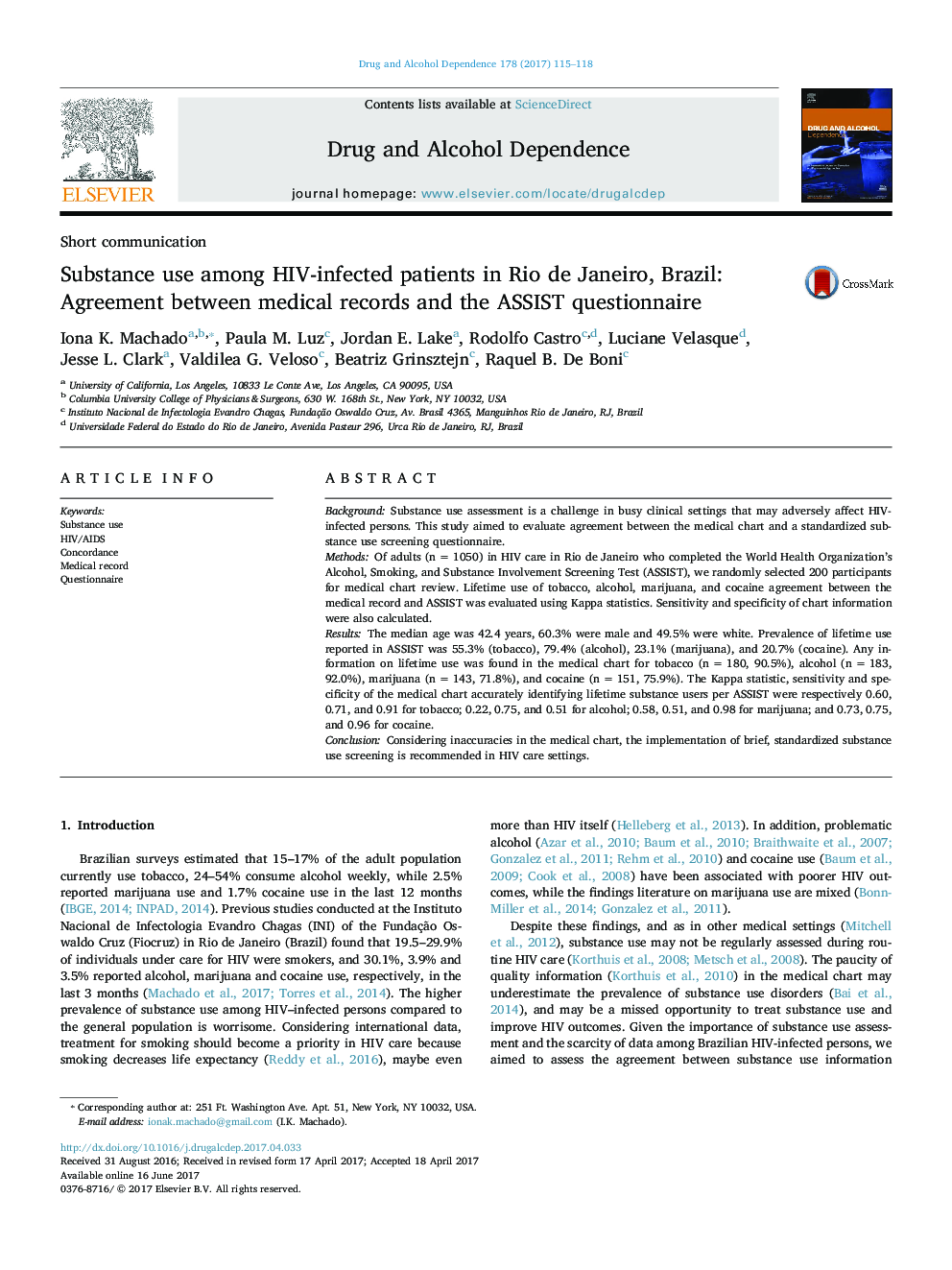| Article ID | Journal | Published Year | Pages | File Type |
|---|---|---|---|---|
| 5120396 | Drug and Alcohol Dependence | 2017 | 4 Pages |
â¢Information from the medical chart did not allow the diagnosis of substance use disorders.â¢The medical chart was a more specific than sensitive indicator of lifetime substance use.â¢Concordance of questionnaire and medical chart substance use information varied by substance.
BackgroundSubstance use assessment is a challenge in busy clinical settings that may adversely affect HIV-infected persons. This study aimed to evaluate agreement between the medical chart and a standardized substance use screening questionnaire.MethodsOf adults (n = 1050) in HIV care in Rio de Janeiro who completed the World Health Organization's Alcohol, Smoking, and Substance Involvement Screening Test (ASSIST), we randomly selected 200 participants for medical chart review. Lifetime use of tobacco, alcohol, marijuana, and cocaine agreement between the medical record and ASSIST was evaluated using Kappa statistics. Sensitivity and specificity of chart information were also calculated.ResultsThe median age was 42.4 years, 60.3% were male and 49.5% were white. Prevalence of lifetime use reported in ASSIST was 55.3% (tobacco), 79.4% (alcohol), 23.1% (marijuana), and 20.7% (cocaine). Any information on lifetime use was found in the medical chart for tobacco (n = 180, 90.5%), alcohol (n = 183, 92.0%), marijuana (n = 143, 71.8%), and cocaine (n = 151, 75.9%). The Kappa statistic, sensitivity and specificity of the medical chart accurately identifying lifetime substance users per ASSIST were respectively 0.60, 0.71, and 0.91 for tobacco; 0.22, 0.75, and 0.51 for alcohol; 0.58, 0.51, and 0.98 for marijuana; and 0.73, 0.75, and 0.96 for cocaine.ConclusionConsidering inaccuracies in the medical chart, the implementation of brief, standardized substance use screening is recommended in HIV care settings.
